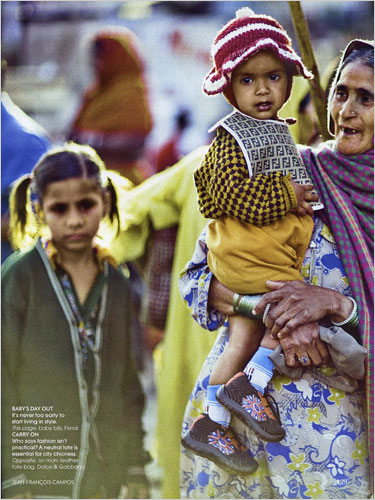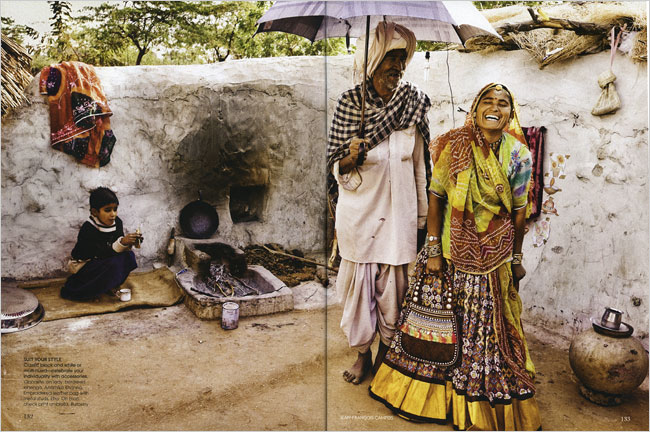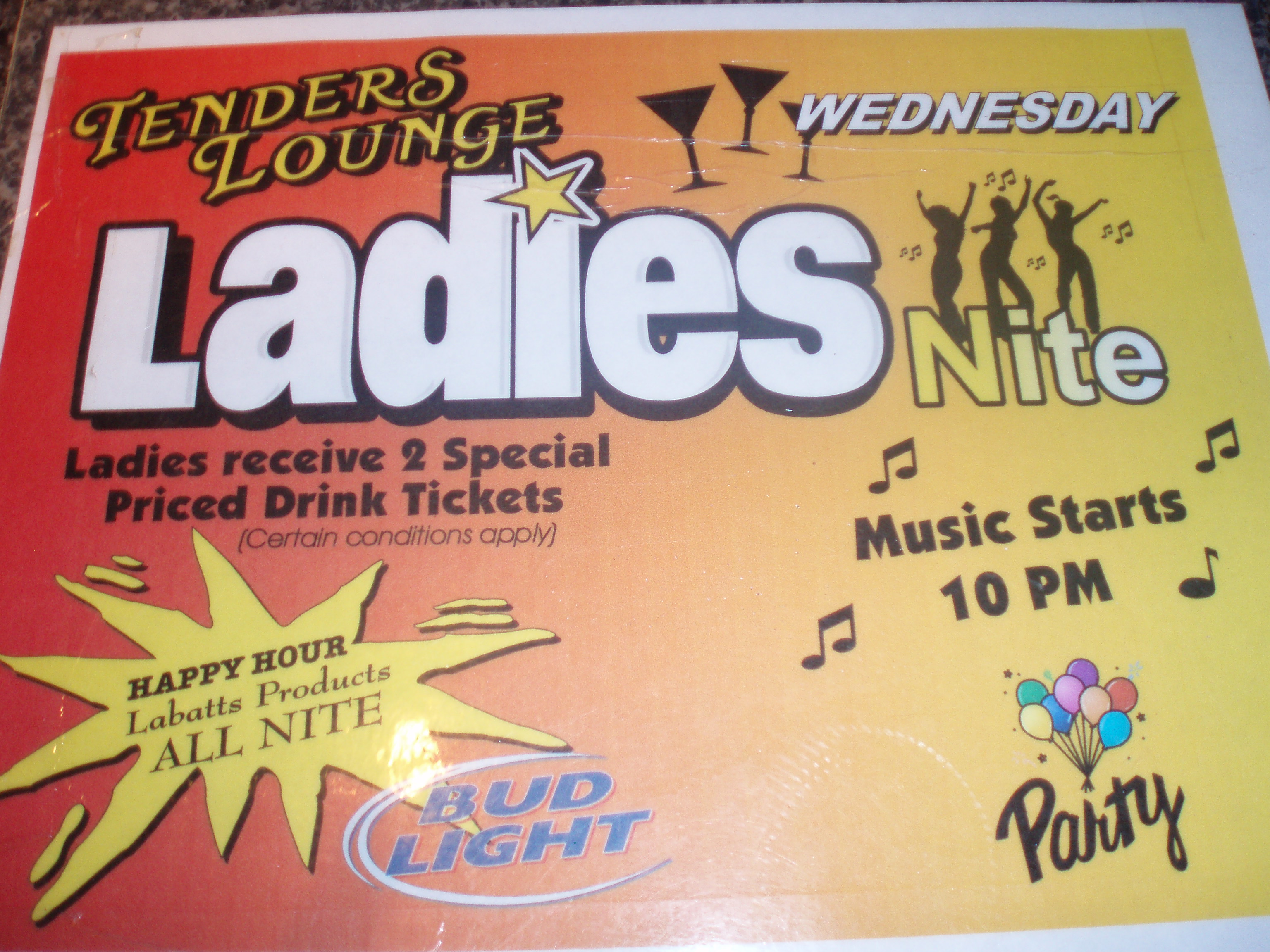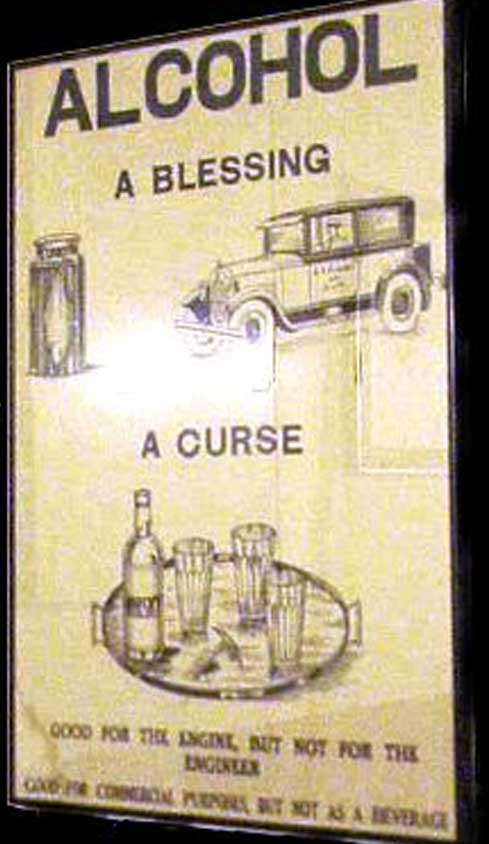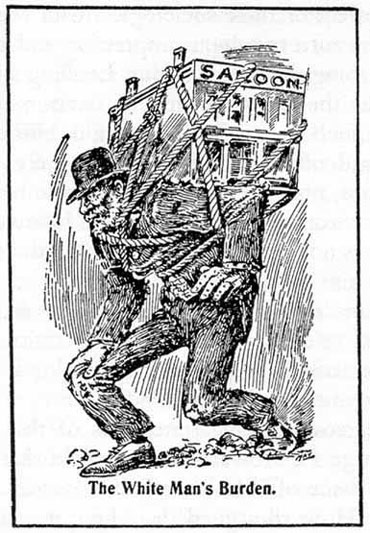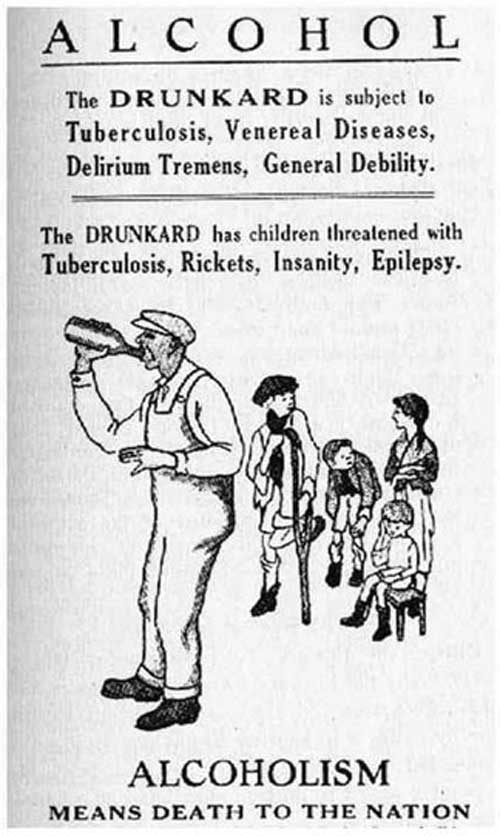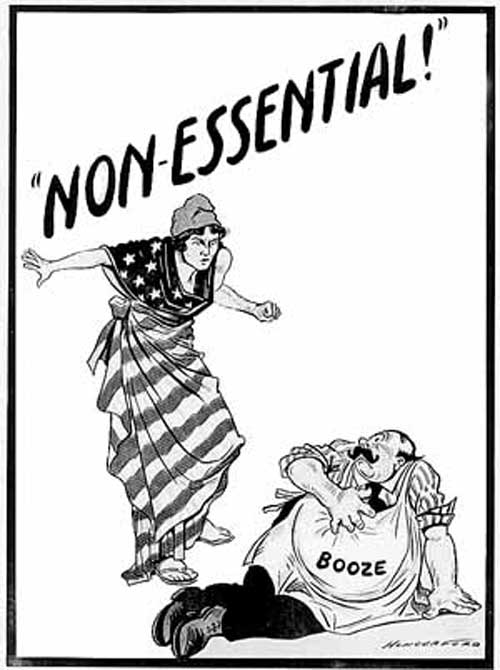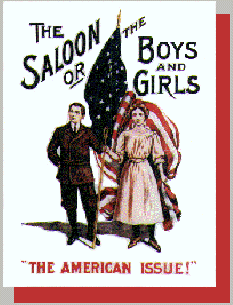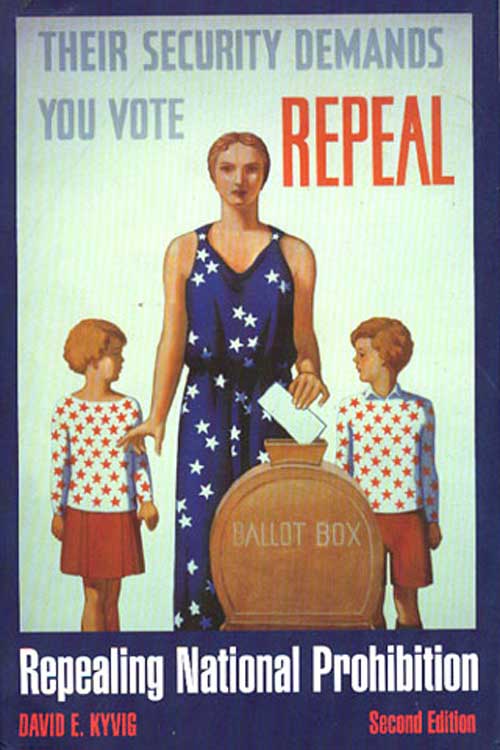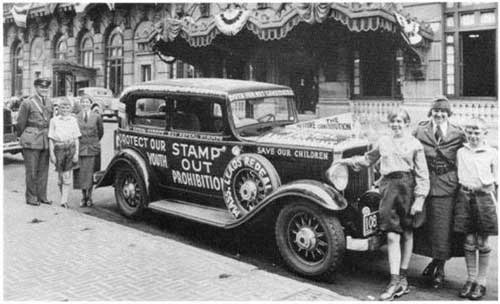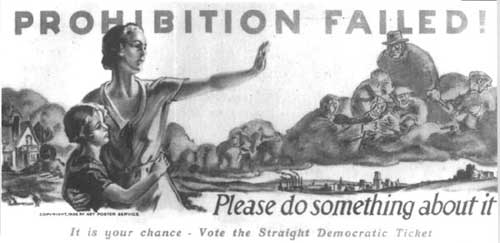Abby K. sent me a link to this New York Times article about the August issue of Vogue India. The issue has sparked controversy because of a fashion spread that shows poor Indians modeling extremely expensive brand-name accessories, such as this child modeling a Fendi bib that costs around $100 while being held by a woman prominently missing teeth:
Or this one of a barefoot man, also missing teeth, holding a Burberry umbrella that costs about $200:
From the article:
Vogue India editor Priya Tanna’s message to critics of the August shoot: “Lighten up,” she said in a telephone interview. Vogue is about realizing the “power of fashion” she said, and the shoot was saying that “fashion is no longer a rich man’s privilege. Anyone can carry it off and make it look beautiful,” she said.
I’m not sure where to even begin with this one. The objectification of the poor, who are used as props in a fashion magazine aimed at people very different from them? The oblivious discussion of the “power of fashion,” while ignoring the issue of how much these luxury items cost relative to average incomes in India? I’m especially struck by the way that the inability to spend $200 on an umbrella is no longer seen as a privilege because “anyone” can “carry it off”; it’s not about having $200 extra dollars, it’s about having the mindset to know you can carry these items and won’t make them look ugly or tacky, apparently. There’s a complete denial of privilege and power having anything to do with wealth, social stratification, or any inequality more consequential than some people maybe worrying that they won’t “make” fashion “look beautiful” (which in and of itself is an interesting idea–it’s not whether the fashion items make you look beautiful, it’s what you do for them).
Gwen Sharp is an associate professor of sociology at Nevada State College. You can follow her on Twitter at @gwensharpnv.

